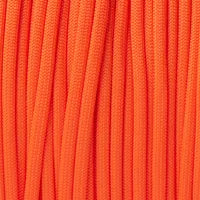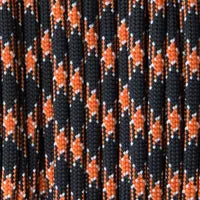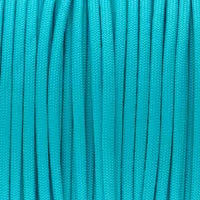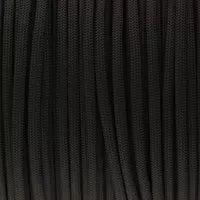Cet article propose un guide détaillé pour installer votre planche d'entraînement en toute sécurité, tout en explorant différentes méthodes adaptées à chaque situation. Voici ce que vous apprendrez :
- Quels sont les avantages d'avoir une poutre à domicile ?
- Comment visser une poutre d'escalade chez soi ?
- Comment réparer un mur qui a été percé suite à l'installation de ma poutre d'escalade ?
- Les solutions de fixation sans perçage existantes
Découvrez comment aménager efficacement votre espace d'entraînement à l'escalade, et optimisez votre progression à domicile.

Quels sont les avantages d'avoir une poutre d'escalade à domicile ?
Installer une poutre d'escalade chez soi, souvent appelée hangboard ou fingerboard, enrichit votre expérience d'entraînement en escalade de plusieurs façons significatives. Voici comment une installation domestique peut transformer votre routine d'escalade et maximiser votre progression.- Flexibilité et contrôle du rythme
- Personnalisation de l'entraînement
- Suivi des progrès
Avantages Additionnels
- Intégration facile dans les routines quotidiennes : La proximité de l'équipement permet d'intégrer facilement des sessions d'entraînement courtes mais fréquentes dans votre emploi du temps quotidien, favorisant la régularité qui est clé dans la progression en escalade.
- Environnement contrôlé : Maîtrisez les conditions d'entraînement telles que le bruit, la concentration, la propreté des prises, ce qui n'est pas toujours possible dans un environnement de salle publique.
- Développement de la discipline personnelle : La gestion autonome de votre routine d'entraînement à domicile peut renforcer la discipline personnelle, un atout précieux tant dans l'escalade que dans la vie quotidienne.
- Possibilité d'entraînement familial : Transformez l'entraînement en une activité familiale, encouragez tous les membres de la famille à participer et à rester actifs.
Ces avantages soulignent non seulement l'utilité d'avoir une poutre d'escalade chez soi mais aussi comment cela peut radicalement améliorer votre entraînement en escalade, en offrant un environnement personnalisé et contrôlé pour un développement constant et mesurable.
Comment visser une poutre d'escalade chez soi ?
Pour les murs pleins (béton, brique pleine)
Pour savoir si un mur est plein ou creux, tapez doucement avec vos doigts dessus : un son creux suggère un mur creux avec des cloisons sèches sur montants, tandis qu'un son sourd indique un mur plein.
- Perceuse à percussion
- Chevilles et vis adaptées au type de mur
- Niveau à bulle
- Marquage: Marquez les points de perçage selon les trous de fixation de la poutre d'escalade que vous souhaitez fixer. Vous pouvez vous aider d'un niveau à bulle afin de vous assurer que votre poutre d'escalade sera bien droite.
- Perçage: Percez les trous dans votre mur à l'aide d'une mèche adaptée.
- Fixation: Insérez les chevilles puis fixez la poutre avec les vis appropriées.
Pour les murs creux (béton, brique pleine)
Pour installer une poutre d'escalade sur des murs qui ne sont pas particulièrement solides, comme ceux en placo ou les cloisons en plaques de plâtre, il est recommandé de renforcer son mur à l'aide de planches de bois.
Outils et matériel nécessaires
- Perceuse et mèches à bois au maximum de diamètre 8mm
- Niveau à bulle
- 2 plaques de contreplaqué ou d'OSB (18mm d'épaisseur et de taille plus grande que la poutre d'escalade que l'on souhaite fixer)
- 4 boulons de diamètre 8mm avec 8 rondelles et 4 écrous associés
- Les vis à bois pour sa poutre d'escalade
- 1 serre joint
- Trous de fixation: Positionnez les deux plaques de bois l'une sur l'autre et de manière aligné. Verrouillez la position des 2 plaques avec le serre joint puis percez 4 trous à l'aide d'une mèche pour le bois aux 4 extrémités et à travers les 2 plaques d'un coup. Laissez une marge suffisante de bois aux chaque coins des 2 plaques.
- Installation de la première plaque de bois: Positionnez et verrouillez en position une des plaques de bois contre le mur à l'aide du serre joint. Si possible, le serre joint doit prendre appui contre la plaque de bois et votre cadre de porte. Avec une perceuse et en gardant la mèche à bois, prolonger les 4 trous de votre plaque dans le mur en placo en le traversant entièrement.
- Fixation des deux plaques de bois: Tout en essayant de garder au maximum le serre joint qui maintient la première plaque, insérez un boulon avec une rondelle à travers la première plaque dans un des trous et utilisez-le pour aligner la seconde plaque de contreplaqué. Ajouter ensuite les 4 autres boulons avec leurs rondelles puis fixer le tout en ajoutant du côté de la deuxième plaque 4 rondelles et écrous pour serrer le tout. Une fois que tout est bien vissé, vous pouvez retirer le serre joint.
- Fixation de la Poutre: Fixez la poutre d'escalade directement à la plaque de bois qui vous convient le mieux en utilisant les vis à bois fournies avec votre poutre. Vous pouvez utiliser un niveau à bulle pour vous assurer que votre poutre d'escalade est bien positionnée.
Les Solutions de Fixation Sans Perçage pour Poutres d'Escalade
Installer une poutre d'escalade, ou hangboard, chez soi peut souvent nécessiter des modifications permanentes qui ne sont pas toujours possibles, surtout pour les locataires. Heureusement, il existe des méthodes de fixation sans perçage qui permettent d'installer ces équipements d'entraînement de manière temporaire et sans endommager les murs. Voici un aperçu de chaque solution avec leurs avantages et inconvénients.
|
Méthode de Fixation |
Description | Avantages | Inconvénients |
|---|---|---|---|
| Modification d'une Barre de Traction | Cette méthode implique l'adaptation d'une barre de traction existante pour y fixer une poutre d'escalade. Elle requiert un certain niveau de bricolage pour accrocher solidement la poutre à la barre. |
|
|
| Le Portique ou potence | Un portique autoportant est une structure indépendante qui permet de fixer une poutre d'escalade sans toucher aux murs ou plafonds. |
|
|
|
Fixation par Compression avec des Serre-Joints |
Utiliser des serre-joints pour fixer la poutre à un cadre de porte robuste sans percer ni endommager les murs. |
|
|
| La Deltabase: Notre Support Autoportant | La Deltabase est un support autoportant conçu spécifiquement pour les poutres d'escalade, offrant une solution pratique et stable sans perçage. |
|
|
Voici la Deltabase qui s'installe sur un portique qui reprend exactement les dimensions d'un cadre de porte standard:
Instagram Post
Conclusion
Suivre ce guide vous permettra de profiter pleinement des bénéfices d'une poutre d'escalade chez vous, tout en assurant une installation sûre et efficace adaptée à votre espace de vie. Optez pour la méthode qui convient le mieux à vos besoins et commencez à transformer votre entraînement dès aujourd'hui. Si vous avez besoin de plus d'informations, n'hésitez pas à nous contacter ici.















































